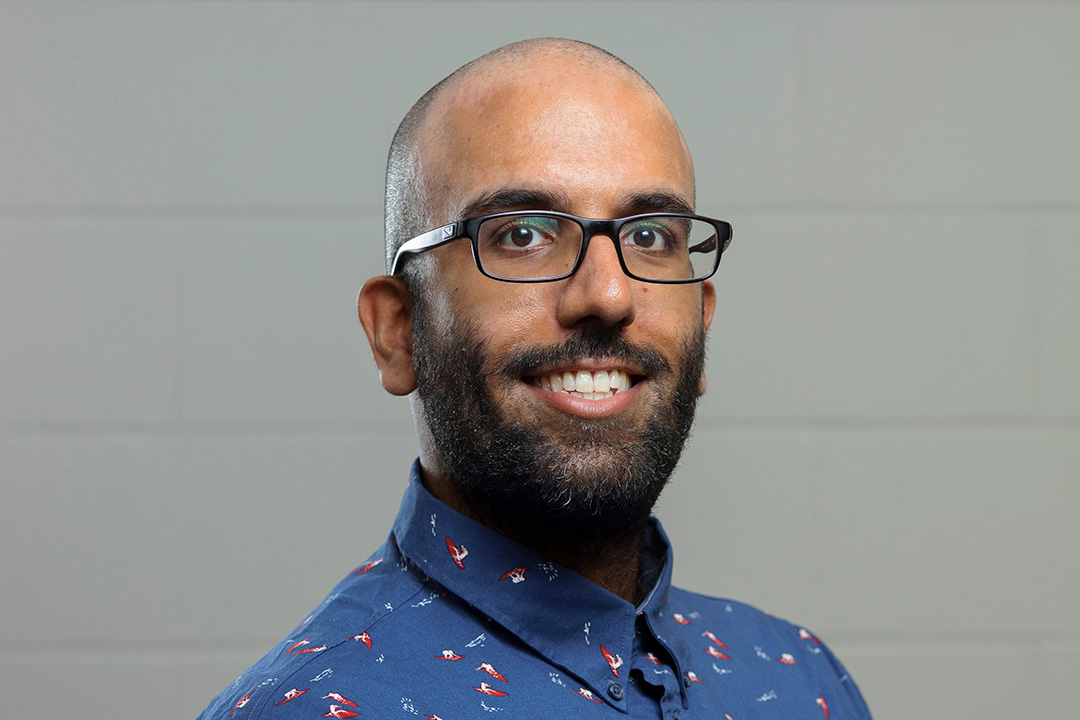
USask researcher trying to unlock mysteries of ‘strange and fascinating’ quantum materials
In a fast-developing world of supercomputing and artificial intelligence, quantum mathematics is a new solution to some of the world’s most pressing problems, and a lot of it is being developed at the University of Saskatchewan (USask).
By Brooke KleiboerUSask graduate student Christopher Mahadeo recently completed his PhD work through the College of Arts and Science. His research was focused on furthering our mathematical understanding of quantum materials and how they can be used to serve as building blocks for new technologies.
“As we delve deeper into mathematics, there is a beautiful world of symmetries and connections,” said Mahadeo. “Many things that seem unrelated, such as probability and rainbows, are, in fact, deeply connected through the inner workings of mathematics.
“When we apply these symmetries and connections to real world problems, such as quantum materials, we begin to see how nature itself is connected in strange and fascinating ways.”
Mahadeo’s research supervisor is USask professor Dr. Steven Rayan (PhD), who has pioneered work in the realm of understanding quantum materials and how they act differently from classical materials. These differences include how they conduct electricity and how this trait may be leveraged in advanced technologies such as supercomputers.
Quantum Innovation is a signature area of research at USask, and is being used to unlock the secrets of these unique materials that could lead to new approaches to real-world, global issues such as how to offer portable medical imaging technologies in rural communities to improve health care accessibility, or how to improve the speed and efficacy of vaccine production processes.
Mahadeo’s research aims to find a better understanding of the mathematics behind how these materials work, so that they may be designed with these big goals in mind.
“I mainly work with objects called Higgs bundles,” said Mahadeo. “These objects originated in high-energy physics, but have proven to be a powerful tool for studying all kinds of relevant problems across mathematics and physics.”
Mahadeo said quantum materials and their behaviour, which can be tackled using Higgs bundles, are largely governed by the laws of mathematics, very similarly to other natural phenomena found in the universe.
“The mathematical equations that govern quantum materials are far more difficult to work with than the equations for classical materials,” said Mahadeo. “It turns out, however, that despite being so complicated, the equations that describe the quantum materials sometimes solve themselves.”
He explains that this can be thought of as similar to putting together a jigsaw puzzle. Grouping similar pieces together can help to simplify the problem, and the same goes for sorting out the mathematical concepts behind quantum materials.
Mahadeo said his work has been inspired by the opportunity he received to further his study of quantum materials alongside Dr. Rayan at USask, who also serves as the director of the USask Centre for Quantum Topology and its Applications (quanTA).
“We were both at the University of Toronto at the same time, me as an undergraduate and master’s student, and Steven as a post-doctoral fellow,” said Mahadeo. “During this overlap, Steven was a mentor for me, providing me insights and opportunities to aid in my growth as a mathematician.”
So far, Mahadeo has presented his research work at two international conferences and has submitted his PhD thesis at USask. The next step in his career will start this fall, when he begins a research assistant professorship at the University of Illinois Chicago.
“I will be a part of a research group of mathematicians and physicists who seek to further uncover the mysteries of quantum materials,” he said.
The research is supported by USask, the Natural Sciences and Engineering Council of Canada, and the Canada Tri-Agency New Frontiers in Research Fund.
This article first ran as part of the 2023 Young Innovators series, an initiative of the USask Research Profile and Impact office in partnership with the Saskatoon StarPhoenix.
Together, we will undertake the research the world needs. We invite you to join by supporting critical research at USask.

